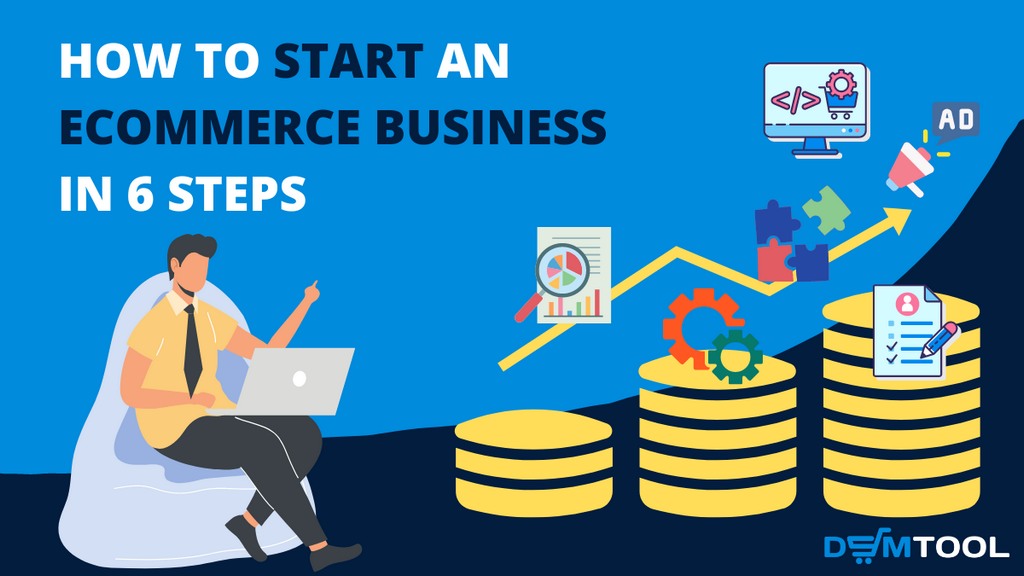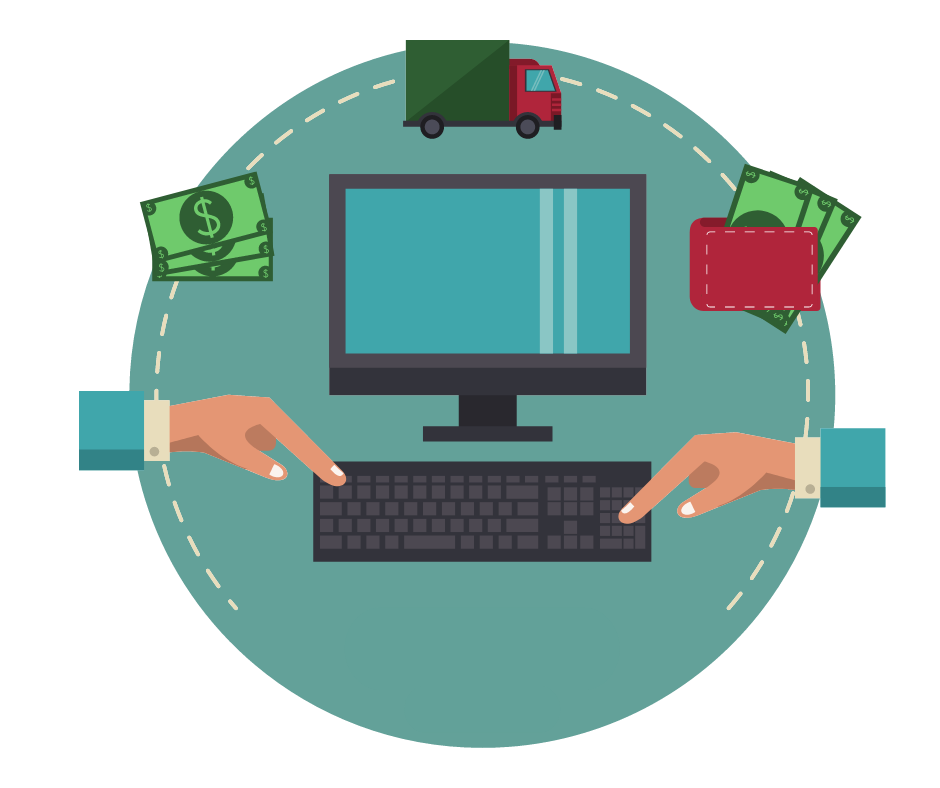
Why start an eCommerce business? Ever since the pandemic, e-commerce businesses have been on the rise. After all, dropshipping and other business models are very likely to be easy, require no inventory, and can provide you with a substantial income. However, not all is gold, especially as it takes a lot of work to get there, and a lack of inventory may pose significant logistical issues that take time to be resolved.
Why Young People Should Start An eCommerce Business
First things first. Starting your own eCommerce business can be a long road. Most people say that they make no money the first year or so but that their entrepreneurial spirit drives them to success. In reality, the story is mixed, with many success stories. Unfortunately, on the other side of the spectrum are the data that say that over 90% of those who start an eCommerce business in the US fail within the first three years.
If you are young, possibly still in college, you may need some reassurance. You may need to understand that although cash is limited, so is the risk. After all, you have no family or dependents and are likely still supported by your parents or legal guardians. If this is the case, check out translation services online, pick a trusted service for students, and delegate some school work to them. This way, you will have enough free time to actually be able to start up on your own.
Importance Of Limited Time Management For Success
As we’ve said before, you are possibly young and still studying. If you also have an entrepreneurial spirit, this should not say that you should leave the school and go straight into the entrepreneurial waters. You should be able to weigh your own risks and needs, and you should also be able to understand that leaving school is never a good idea.
6 Steps To Start An eCommerce Business Successfully

First things first, all the business that you need to do is do research and market analysis. This is what most businesses boil down to. This will help you overcome some common issues and will also help empower your future decisions. Basically, good research and analysis are a must before you begin. And just to do so, there are 6 steps you should follow to start an eCommerce business:
- Identify a profitable niche;
- Develop a business model for the niche;
- Develop a unique business structure, and be very critical while doing so;,
- Register your business and get all the permits you need to;
- Set up the e-commerce platform;
- Launch! Good luck!
Step 1: Identifying a profitable niche
Identifying a profitable niche is the first step to success when it comes to running an e-commerce business, but it is also the most difficult part. You need to determine your product niche and the winning products you are going to sell. And for that, you need to do product research.
Finding a niche that has not been overexploited can be difficult and time-consuming. Many now refer to business chances as actual ‘niche gaps’ or even ‘niche cracks.’ The most inspiration can come from Reddit and similar platforms where users can actually post about their problems. Identify problems you can deal with for other people and:
- Understand the target audience and how to approach them;
- Understand your competition in the field, if there is any present;
- Conduct market research to validate your idea.
Step 2: Develop a business plan
Developing a good business plan should be the fruit of the work outlined in Step 1. A good business plan will consider all your audience’s needs and desires, ample research on the topic (especially case studies), and all other factors that may be important in your niche. E-commerce is great, but to start an eCommerce business successfully, your plan should also consider unforeseen consequences, such as recent shipping cost increases, delays, and backups in the supply chain.
Although these problems may seem small at first, they can make or break a good business plan. A detailed plan is also needed when you apply for any certification, as well as when you need to apply for grants and loans. In the most basic version of a business plan, you should outline the following:
- Your goals and objectives;
- Marketing strategies;
- Costs estimated revenues (case studies help out a lot).
Since this is a lot of work, you can contact professionals to help you. The best essay writing services can help you with this and do the writing part, but only after you have finished researching the topic. This way, you are sure that you can spend enough time prepping and doing the research while a more technical aspect is being carried out by other people.
Step 3: Choose your business structure
Once the business plan is there, focusing on the business structure is another thing to consider to start an eCommerce business. Although working alone is a very relatable idea, working with a team of people will be very different. Knowing how to structure your business, optimize, streamline, and automate some of the work is a must at this stage. Every single step in the production process that can be automated means thousands saved in the long run. That is why most eCommerce businesses nowadays rely on special dropshipping automation software.
Step 4: Register your business and hire a bookkeeper
This is a step where you will need professional help. Most bookkeepers will be able to assist you and provide ample support, but finding an attorney of law may even be better. As they can get quite expensive, you should know that there are usually freely available business advisors in most municipality offices. Even if not, this place is a must so that you can learn more about the registration process and all the certifications and licenses you may want.
As soon as an eCommerce business is up and running, there’s a legal obligation to track every payment, log every invoice, and ensure that you’re reporting accurate sales tax and keeping on top of how much money flows in and out of the company. Fortunately, accounting has evolved with the innovations of modern digital technology, and through simple but effective eCommerce accounting software or some accounting project management software, all of these processes can be streamlined via one digital accounting solution.
Learn how sellers and dropshippers can benefit from using accounting software in our eCommerce Accounting Software: A Dropshippers Guide.
Step 5: Set up an eСommerce platform
Setting up the platform is the next logical step if you want to start an eCommerce business. Once you know the target audience and can find your way around the business plan, setting up the platform is going to be what you want to do at that point. It is necessary to specify that having access to a good platform is not expensive, so there is no need to overinvest. What you should rather focus on is finding patterns and coming up with easily doable steps to placing each product on the platform. Be prepared to learn how the platform works as well, as not all of them are as easy and as streamlined as Etsy is, for example.
The best eCommerce platforms are those that:
- Offer free inventory tracking;
- Offer free invoice generation and possibly send it to the customers;
- Are easy to use, streamlined, and can help you make pre-saved messages, text, and other components of the product page (since you will be placing more than a single product there);
- Have a low downtime, preferably less than 1%.
Step 6: Launch and market your business
Once everything is in place, you can launch your business and focus on your marketing plan. Marketing is not only paid marketing and ads; it is also all the good SEO practices, as well as all the other nifty tricks of the industry.
Making a blog is a must as well. You can record yourself and use online transcription services to turn speech into text. This way, you can help yourself save time while staying active in all the fields of your e-commerce.

Not yet making money online?
Start your own dropshipping business. Sign up for a free trial of DSM Tool and we’ll help you get started. Today is the day.
Final Considerations
Running your own business in your 20s and becoming financially independent is a dream of many, but few succeed in doing so. To ensure you get the right deal and that you are not left behind, follow our six proven steps to ensure you get to establish a good e-commerce business. Never forget that you should constantly keep researching the market and be ready to make changes as soon as the market demands them.
Here are a few related articles you might find helpful on your journey to start an eCommerce business:
- What is dropshipping? [Complete Beginners Guide]
- eBay Marketplace: How To Sell On eBay For Beginners
- Shopify Print On Demand Drop Shipping Guide
- List of Best eCommerce Platforms for Dropshipping
- What is Social Commerce And Why You Should Try Social Shopping
About the author:
Mark Wooten is an enthusiastic reader and translator. His part-time job involves technical translation, though he prefers to focus on creative writing, which he believes gives him the opportunity to discover new insights into the text. Ultimately, Mark’s dream is to become a professor of literature by taking advantage of the skills he has developed through his experience as a translator.

